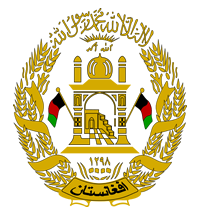Afghanistan: Government
Due to political unrest, the information on these pages may not reflect current conditions in the country.
Key Figures
- Chief of State:
- Prime Minister Haybatullah Akhundzada
- Head of Government:
- Prime Minister Haybatullah Akhundzada
Overview
- Government Name:
- Islamic Republic of Afghanistan
- Constitution:
- Adopted: 2004; There were previous 1747 and 1923 versions. The 2004 Constitution evolved out of the Afghan Constitution which was mandated by the Bonn Agreement. It overviews the structure of the Afghan government and territory associated with its individual provinces.
- Government Type:
- Islamic Republic

Index of Economic Freedom
Country Risk Rating
Government Branches
| Main Powers | Election Process | Election Cycle 1 | |
|---|---|---|---|
| Executive | The president has power over the military and legislative affairs and serves as the head of state. The vice president has the second highest political position obtainable in Afghanistan. |
The president is elected by an absolute majority vote through a two-round system. Vice presidential candidates are appointed by the president then elected by direct popular vote. |
7 years |
| Judicial | The supreme court is the highest judicial branch of the government and head of the judiciary power. The supreme court is managed based on law by the chief of supreme court, members, high council of the supreme court, general administration directorate of the judicial power, and some professional and administration sections. |
The nine justices on the tribunal are appointed by the president, with the approval of the Wolesi Jirga, the lower house of the nation's legislature. The president selects one of the nine members to serve as chief justice. |
4 Year Renewable Terms |
| Legislative | The House of Elders and House of the People which comprise the parliament has been in Hiatus since 2021. |
The Taliban has shown no interest in reviving the House of the Elders and House of the People |
House of Elders: 34 elected for 3 years, 34 for 4 years, and the remaining 34 for 5 years; House of People: 5 years. The parliament has been in hiatus since August 2021. |
Regional Trade Blocs
International Organization Participation [2]
Environmental Agreements [3]
Tax Information [2]
- Tax Authority:
- Information not available
- Tax Name:
- Information not available
Sources:
- ElectionGuide http://www.electionguide.org/
- EY, http://www.ey.com
- CIA World Factbook, https://www.cia.gov/the-world-factbook/
- U.S. Bilateral Relations Fact Sheets http://www.state.gov/r/pa/ei/bgn/


